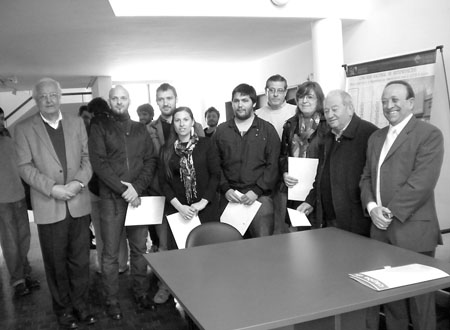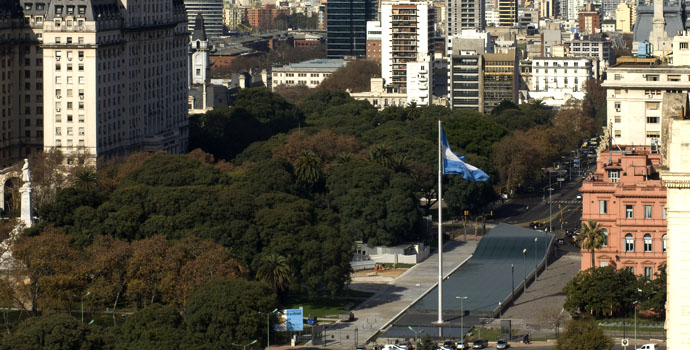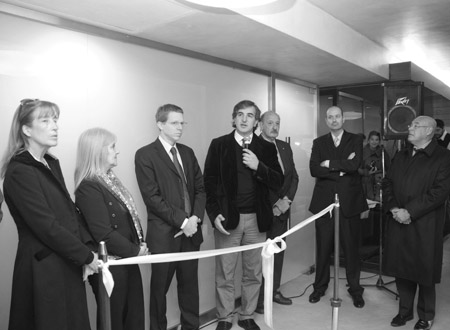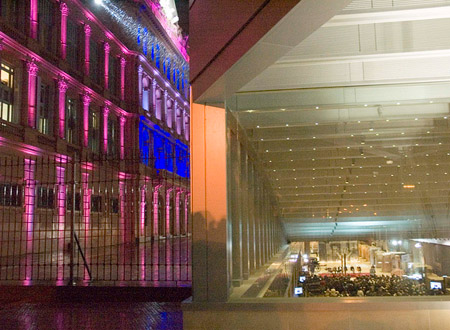
2011-08-31
Enrique Bares President of the Jury in National Design Competition
Enrique Bares Senior Partner of B4FS was appointed President of the Jury in the framework of the national competition for the new Auditorium and administrative offices C.A.P.B.A. Luján, the first design competition managed via the web in Argentina. The awards ceremony took place last august the 17th in the Curutchet House -one of the two buildings in the Americas by Le Corbusier- in the city of La Plata, in Argentina.
Further information here (spanish)

2011-09-12
The Bicentenary Museum awarded as one of the best interventions in the historical Buenos Aires
The Bicentenary Museum has been recognized in the Best intervention in the historical centre of the city of Buenos Aires awards, in the category "Value enhancement of the archaeological heritage".
Jointly organized by the Direction of the Historic Centre and the Central Architects Society (SCA), these awards seek to recognize the works that contribute to the preservation of the heritage and the revitalization of the historical center of the City of Buenos Aires.
The jury was composed of architects Darío G. López, Vice-President of the SCA; Rita Comando, President of the Heritage Subcommittee of the SCA; Graciela Labato, on behalf of the Minister of Culture of the Buenos Aires City Government; Luis J. Grossman, General Director of the Historical Center of the City of Buenos Aires; Carlos Berdichevsky, on behalf of the College of Jurors of the SCA and selected by the participants, and Andrea Fontela, Commission for the preservation of the Cultural Historical Heritage of the city of Buenos Aires. Architects Gabriela Mareque for the DGCH and Marta García Falcó, for the SCA participated as advisors.
Further information about the awards (in spanish)

2011-07-07
Opening of two commercial boutiques of the Bank of the City of Buenos Aires
project photos and information
Last July two commercial “boutiques” developed by B4FS for the Bank of the City of Buenos Aires B4FS were officially opened. B4FS was in charge of the design project and the work management for these new branches "boutique", intended to complement the already existing customer service points in the city of Buenos Aires.
This is an innovative typology conceived for a more personalized attention, intended exclusively to the sale of banking products, without money circulation. The core program consists of a waiting area and personalized attention boxes, all integrated in a same environment. This is completed by a series of additional small rooms destined for storing, kitchenette and sanitary.

2011-05-26
The Bicentenary Museum was offcially opened
In the context of the 101 anniversary of the May Revolution –one of the two national Argentinean days-, opened the Museum of the Bicentenary. It is placed the area that was once occupied by the Fort of Buenos Aires at the beginning of the 18th century and the Taylor Customs, in 1855. The restoration and conversion project was developed by B4FS, in the framework of an order made by the Universidad Tecnológica Nacional. (National University of Technology). The premise of the project consisted of minimal intervention in the archaeological site, responding to the need to halt its deterioration process and generate a contemporary museological space that provides safety, habitability and comfort in accordance with the current technological development. The Museum, which has an area of about five thousand square meters will house, among others, the mural painting "Ejercicio Plástico", of the Mexican artist David Alfaro Siqueiros and will be open to the public from Tuesday to Sunday, with free admission.

2011-03-14
The “Aduana de Taylor” & Government House Museum works are nearing completion
The works of the “Aduana de Taylor” and Government House Museum have been progressing, after the opening of the Mural painting by Siqueiros in last May.
The project of refurbishment and new intervention of the “Aduana de Taylor” consists in the recovery of the site and its transformation into a contemporary exhibitions space that will host the mural painting "Plastic Exercise", by the Mexican David Alfaro Siqueiros.
The premise of the project is to stop the process of deterioration of the archaeological site, caused by exterior exposure; reverse the adverse conditions affecting the vaulted galleries and create a contemporary museum that provides habitability, safety and comfort in accordance with the present standards. The “Aduna de Taylor” Museum is integrated with the area of the Bicentenary Park and Cultural Center, which contributes to reversing its present situation of road corridor into a real civic & cultural corridor.